


Ellery Queen and Sherlock Holmes-Undisputed masters of analytical deduction - their talents and methods strikingly, almost uncannily, alike. Through the strange interlocking of events past and present, two celebrated detectives meet to focus their razor-sharp intellects, their brilliant powers of observation on the mystery of... Jack the Ripper. History's most depraved murderer, his victims were the whores of Whitechapel. Lurking in narrow, fog-shrouded alleys, he crept forth night after night to murder and mutilate. Eluding Scotland Yard's most heroic efforts to track him down, the Ripper continued to satisfy his unnatural appetites, unrestrained and unidentified!
Sherlock Holmes: the greatest fictional
detective of all time!
One of the earliest and rarest Holmes
pastiches, A Study in Terror inspired the classic film of the same
name starring John Neville, Donald Houston, Anthony Quayle and Robert Morley
- and it offers a startling answer to the ever-fascinating question: |
||
  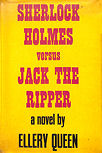    |
||
| Above: This time only Gollancz
provided a hardback first edition. Left to right: Lancer (1966) (1st);
Lodestone (1966); dust cover and hardcover Gollancz edition (1967); and two Lancer editions
(1967-69).
(Click on the covers to see the
differences) * Note: Lancer went bankrupt but then one of the founders brought out editions under the ‘Magnum Books’ (and Lodestone) moniker without paying anyone. The Lodestone titles were apparently never sold in bookstores, but was a special line for discount stores in the States. |
||
| While
How, after producing a pastiche called The Misadventures of Sherlock Holmes which had to be withdrawn when Doyle’s trustees objected, Ellery Queen managed to get away with a veritable Sherlock Holmes novel in 1966 without encountering similar protests it is difficult to say, and few of his readers probably care. The important thing is that he managed to bring off a magnificent tour de force wholly in the style of the master. The Holmes part of story of the movie was rewritten by Paul W. Fairman and then Ellery Queen added a second solution that trumps the great Holmes! In our 2002 interview Edward Hoch stated that just prior to Face to Face, Lee collaborated with Dannay on the framing sections of A Study in Terror added to Paul W. Fairman's novelization of the film. The story was also published in Argosy (Aug '91) as A Study in Terror aka The Adventure of the Surgeon's Kit. |
||
| As such the novel is, in actuality,
two novels in one. Ellery Queen (the
character) is given an unpublished manuscript by a woman who asks that
|
||
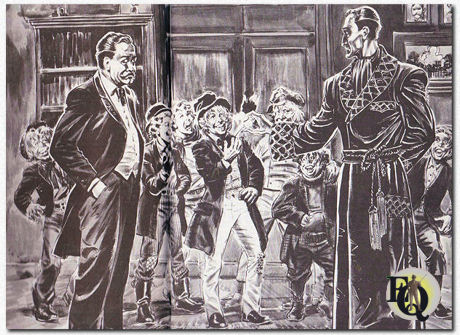 |
||
| Above: Illustration by Alan Weiss for Ellery Queen's A Study in Terror aka The Adventure of the Surgeon's Kit in Argosy (August 1991). | ||
|
Critics accused EQ of taking this job just for the money and based on both movie and book
we have to say the money seems well-spent, as it remains a clever, creative pastiche. The Watson manuscript details Holmes tracking the killer and eventually discovering him. Working from text only Ellery deduces otherwise. Unlikeliness aside, the main problem of this novel is that it purports to be giving a solution to the puzzle. As such, it should follow the constraints of the evidence as we know it. This does not happen as victims are introduced haphazardly and the murders do not take place in the correct sequence. A petty point, to be sure, but one that invalidates its authority. The story is an amusing read but unsatisfying for both Ellery |
||
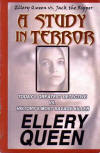  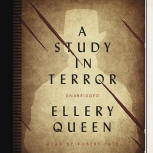 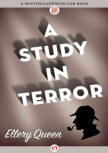 |
||
|
||
|
|
||
|
*
Interested readers should know
that the icons/covers
of books, used throughout the
website have extra
descriptions/information not
included in the text on the same
page. Pointing your cursor at
the icon/cover used to reveal
this extra information. To achieve the same effect Firefox users can install an add-on called 'Popup ALT Attribute'. When installed pointing your cursor at an icon/cover results in showing you the details or additional information. |
||
|
Copyright © MCMXCIX-MMXXII Ellery Queen, a website on deduction. All rights reserved. |